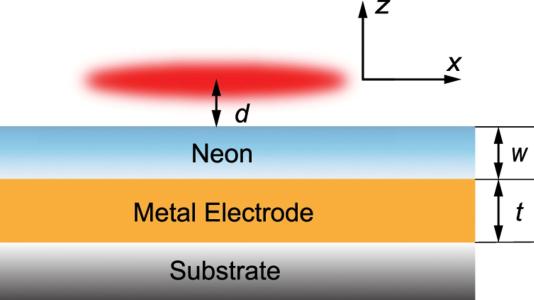
Scientific Achievement
Theoretical analysis of decoherence mechanisms indicated that an electron spin qubit on a purified solid neon surface could achieve a coherence time as long as 81 seconds.
Significance and Impact
The theoretical results indicate that single-electron qubits on solid neon could be superior to most existing semiconductor spin qubits. Such qubits would be applicable to quantum computing and other quantum information systems
Research Details
- The inhomogeneous dephasing time was estimated as 0.16 ms with natural Ne and 0.43 s with purified Ne, better than most semiconductor quantum-dot spin qubits.
- Under Hahn echoes, the coherence time improved to 30 ms for natural Ne and 81 s for purified Ne.
Work was performed, in part, at the Center for Nanoscale Materials (CNM).
Argonne National Laboratory seeks solutions to pressing national problems in science and technology. The nation’s first national laboratory, Argonne conducts leading-edge basic and applied scientific research in virtually every scientific discipline. Argonne researchers work closely with researchers from hundreds of companies, universities, and federal, state and municipal agencies to help them solve their specific problems, advance America’s scientific leadership and prepare the nation for a better future. With employees from more than 60 nations, Argonne is managed by UChicago Argonne, LLC for the U.S. Department of Energy’s Office of Science.
The U.S. Department of Energy’s Office of Science is the single largest supporter of basic research in the physical sciences in the United States and is working to address some of the most pressing challenges of our time. For more information, visit https://energy.gov/science.